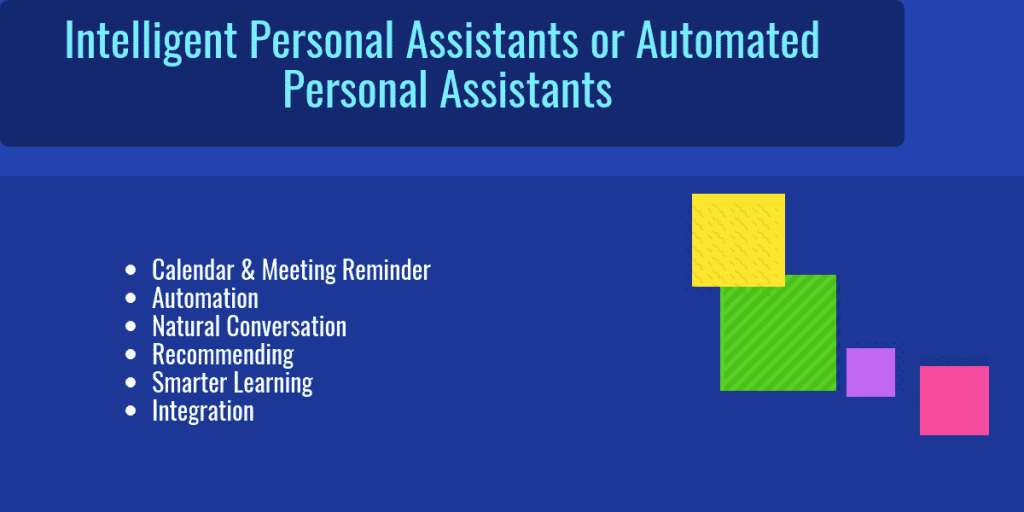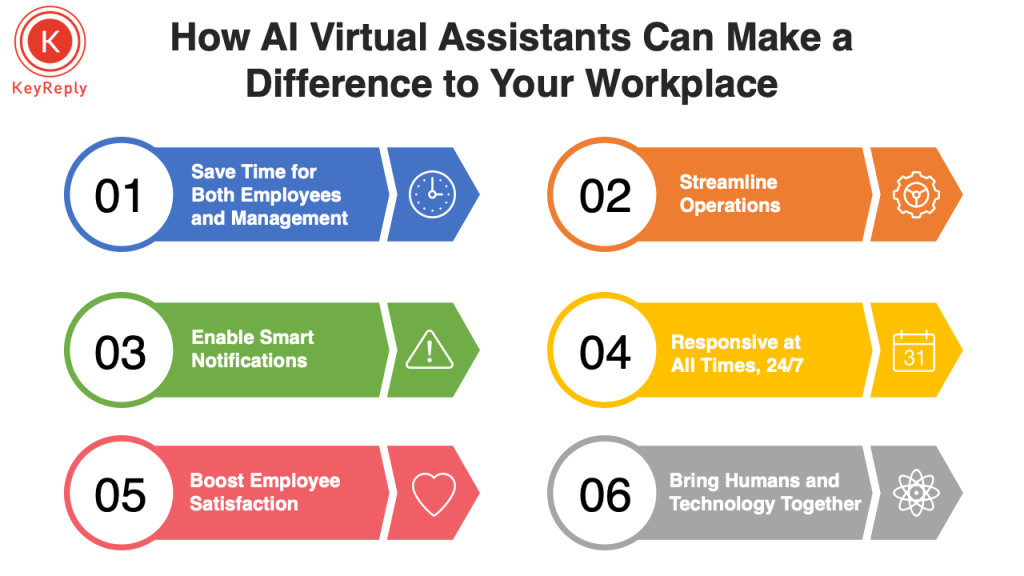General Information
An intelligent/smart virtual assistant is a computer programme that mimics human interaction to do specific duties, such as customer support. Deep neural networks, machine learning, and other advances in AI technology have resulted in the proliferation of virtual assistants. The intelligence behind the technology denotes the ability to learn, reason, and comprehend, all of which are required to mimic a customer care agent’s problem-solving abilities (Gray 2016).
Virtual assistants are usually cloud-based programmes that work with internet-connected devices and/or apps. Intelligent Virtual Assistants (IVAs) are the next era of automation technologies, allowing businesses to expand personal interactions in order to attract, acquire, and retain clients.

IVAs allow businesses to provide a tailored experience to everyone of their contacts, leads, and consumers. The ability to communicate in a human-like manner is a significant breakthrough over how organizations have previously interacted with contacts, which has been limited by personnel capacity or mostly generic bulk email programmes up until recently (‘What Is an Intelligent Virtual Assistant and How Can It Help Your Business? | Accelerating Revenue with Intelligent Virtual Assistants’ 2021.).
Technical Information
Natural Language Understanding (NLU) and Natural Language Generation are essential components of an Intelligent Virtual Assistant (NLG). Machine learning, which pertains to a computer’s ability to understand without supervised learning and becoming “smarter” as more information is received, is another important component of an IVA. It is a hybrid of several technologies, including speech recognition, voice analysis, and language processing.
When a user tells a virtual assistant to do something, the natural language voice stream is turned into digital data that the program can analyse. Then, using an innovative algorithm, this data is compared to a software database to find an appropriate answer. This database is hosted on cloud servers that are scattered around the network. As a result, most personal assistants are unable to work without a reliable Internet connection. The software’s database expands and optimizes as the number of queries increases, which enhances voice recognition and boosts the system’s response time. (Falkner 2018).
Historical Information
In the 1990s, digitized speech recognition became a feature of IBM’s personal computer for customers. Much later, in 1994, IBM Simon, the first smartphone to hit the market, set the framework for today’s sophisticated virtual assistants.
In 1997, Dragon’s Naturally Speaking software was capable of recognising and trancribing common human speech into a paper at a rate of 100 wpm. Colloquis first made Smarter Child available to the public in 2001, on platforms such as AIM and MSN Messenger. Smarter Child was entirely textual, but it could play online games, weather forecast, search up facts, and communicate with users in various ways.(Rouse 2014).
Siri, the very first new technological virtual assistant placed on a smartphone, was released as a feature of the iPhone 4S on October 4, 2011. Its purpose was to assist with things such as texting, making calls, monitoring the weather, and to set an alarm. It has grown over time to give travel tips, internet searches, and traffic information and directions. Amazon debuted Alexa, along with the Echo, in November 2014. In April 2017, Amazon introduced a service for designing conversational interfaces for any sort of virtual assistant or interface (Wobcke et al. 2007).
This advancement in smart visual assistants is since then being elevated, leading to a greater demand of this technology worldwide. Currently different businesses and organizations use this technology to ease their work.
Impact of Technology

Intelligent Virtual Assistants are already adopting innovative Interactive Voice Response systems because people perceive them unsatisfying, outdated, and inefficient. Intelligent Virtual Assistants, on the other hand, use a more flexible and customer-friendly approach to improve customer and brand experiences. Virtual Assistants are also enabling the next generation multichannel experience, allowing consumers to engage with businesses in a smooth and simple manner across phone, text, and other media. Many technologies are moving these systems forward, but human-assisted technology is by far the most significant.(Gray 2016).
AI-powered virtual assistants are unquestionably taking over company operations and enhancing efficiency by automating recurrent chores and jobs. Long-term market growth will be decided by enterprises’ capacity to adapt to VA and other machine learning technologies in all of their complexities. In terms of the human workforce, virtual assistants will not replace people, but rather maximise their potential by assigning activities that need higher cognitive thinking (‘4 Ways Enterprise Virtual Assistants Will Impact Future of Work’ 2020.)
The sophisticated (and more fascinating) digital workplaces are growing daily. Artificial intelligence, the internet of things, self driven vehicles and new interactive interfaces based on various media gradually become a reality for employees across industries. Virtual assistants combine different environments, not only bringing them all together, but also acting as intermediaries between humans and technological innovation, with a net positive influence on office efficiency. (‘How AI Virtual Assistants Can Make a Difference to Your Workplace’ 2021.).
Future Advancements
By 2025, Gartner forecasts 50% of knowledge workers would use a virtual assistant every day, up from 2% in 2019. By 2023, Gartner expects that 25% of the interactions between employees will be voice communications. In the near times, assistants would be able to use technology to comprehend how we feel when we talk to them and provide guidance and customized answers.
Latest research indicates that shipments of products with built-in voice assistant technologies are expected to increase to 3.0 billion units by 2024, representing a 19 percent share of CAGR over the projection period (‘Virtual Assistants Market Projected to Double by 2024’ n.d.). They need to be integrated with enterprise applications and have the ability to navigate the processes in order to make digital assistants more recognized. That would be the next challenge for digital assistants to overcome in order to be considered a key stakeholder in the organization (‘Help at work: Future of work and the roleof digital assistants – The Financial Express’ 2020.).
References
‘4 Ways Enterprise Virtual Assistants Will Impact Future of Work’, retrieved June 10, 2021, from <https://blog.kore.ai/4-ways-enterprise-virtual-assistants-will-impact-future-of-work>.
Falkner, S 2018, ‘An Introduction To Intelligent Personal Assistants — Onlim’, Onlim, retrieved June 10, 2021, from <https://onlim.com/en/introduction-to-intellligent-personal-assistants/>.
gray, phil 2016, ‘The Rise Of Intelligent Virtual Assistant’, interactions.com, pp. 1–1, retrieved June 10, 2021, from <https://www.interactions.com/blog/intelligent-virtual-assistant/rise-intelligent-virtual-assistants/>.
‘Help at work: Future of work and the role of digital assistants – The Financial Express’, retrieved June 10, 2021, from <https://www.financialexpress.com/industry/technology/help-at-work-future-of-work-and-the-role-of-digital-assistants/2211699/>.
‘How AI Virtual Assistants Can Make a Difference to Your Workplace’, retrieved June 10, 2021, from <https://blog.keyreply.com/blog/how-ai-virtual-assistants-can-make-a-difference-to-your-workplace>.
Rouse, M 2014, ‘What is virtual assistant (AI assistant)? – Definition from WhatIs.com’, retrieved June 10, 2021, from <https://searchcustomerexperience.techtarget.com/definition/virtual-assistant-AI-assistant>.
‘Virtual Assistants Market Projected to Double by 2024’, retrieved June 10, 2021, from <https://www.futuresource-consulting.com/insights/posts/2021/january/virtual-assistants-market-projected-to-double-by-2024/?locale=en>.
‘What Is an Intelligent Virtual Assistant and How Can It Help Your Business? | Accelerating Revenue with Intelligent Virtual Assistants’, retrieved June 10, 2021, from <https://www.conversica.com/blog/what-is-an-intelligent-virtual-assistant-and-how-can-it-help-your-business/>.
Wobcke, W, Nguyen, A, Ho, V & Krzywicki, A 2007, ‘The smart personal assistant: An overview’, AAAI Spring Symposium – Technical Report, vol. SS-07-04, no. May 2014, pp. 135–136.

